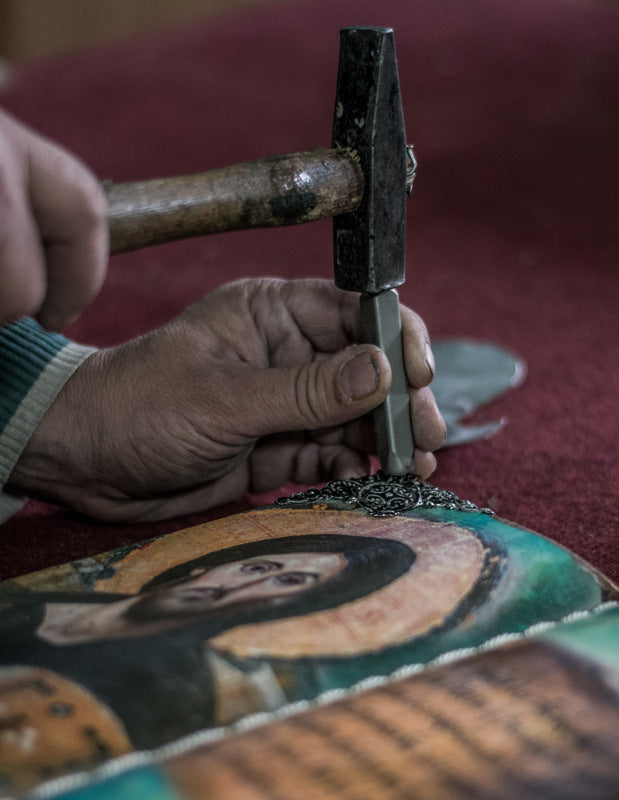[title]
[message]TheHolyArt
Christian Gold Plated Bronze Handmade Altar Tabernacle, Orthodox Altar Church Tabernacle Monstrance Handmade Pyx Artoforio, religious gift
Christian Gold Plated Bronze Handmade Altar Tabernacle, Orthodox Altar Church Tabernacle Monstrance Handmade Pyx Artoforio, religious gift
Couldn't load pickup availability
★Dimensions 36x15cm/14.1x5.90inches Length★
Whenever Catholic and Orthodox believers hold a mass or prayer service outside the cathedral or church, they take with them the most valuable religious artifacts. In Catholic cathedrals and Orthodox churches, such items are put in a special vessel known as a reliquary monstrance.
An ancient Greek cylindrical vessel resembling a jar with a lid, which was called the Pyxis, served as the prototype for a reliquary monstrance. It was usually made of wood, more often – boxwood. Later, people began to create such vessels from baked clay. If a person was wealthy, their Pyxis was made of such precious materials as bronze and ivory, and decorated with different patterns, sometimes even with paintings.
In such cylindrical boxes, Greek women kept their accessories, valuable jewelry, cosmetic ointments, and aromatic compounds. These vessels were found in many ancient Greek graves because most women were buried with their belongings, including the Pyxis.
In the 7th century BC, due to the development of pottery, the shape of the Pyxis changed. The vessels became larger; the drawings on their sides became livelier and more vibrant, created with the use of a red-figure vase painting.
Specialized vessels and boxes for the storage of the most valuable Christian relics appeared with the birth of Christianity and the advent of the rites of communion, baptism, unction, and other sacraments. They were used for storing icons, particles of the Holy Land, altar crosses, as well as prosphora symbolizing the body of Jesus Christ, and wine symbolizing His blood. Such a vessel was called a reliquary monstrance, and it was decorated in many different ways.
The tradition of preserving the sacred objects, as well as their removal outside the place of worship, appeared in the 4th century. Since that time, this religious ceremony has developed to a large extent. In the lives of the faithful, it has become one of the most important rituals held outside the church.
The divine artifacts are sometimes taken out together with a tabernacle, sometimes – in a special reliquary monstrance. The vessels are manufactured of precious metals and, as a rule, executed in the form of miniature temples. Thus, most of them resemble a cathedral or a church – a place of their permanent storage. Besides, the prevailing number of the first class relics available online are also kept in such exquisite boxes.
The Orthodox Christians use these wonderful vessels for the transfer of the holy remains to the sick or dying during the religious processions. Thousands of believers come to such processions, singing and praying. As for Catholic tabernacles, they are reminiscent of Roman Catholic cathedrals. The figurines depicting the Virgin Mary decorated with ribbons and flowers are placed in the center.




We design responsibly.
We intentionally and respectfully design our pieces to transcend passing trends. We believe in creating timeless items that will uplift your Spirit and bring you closer to Him.
"James 4:8 (NLT) says,“Come close to God, and God will come close to you. Wash your hands, you sinners; purify your hearts, for your loyalty is divided between God and the world."



